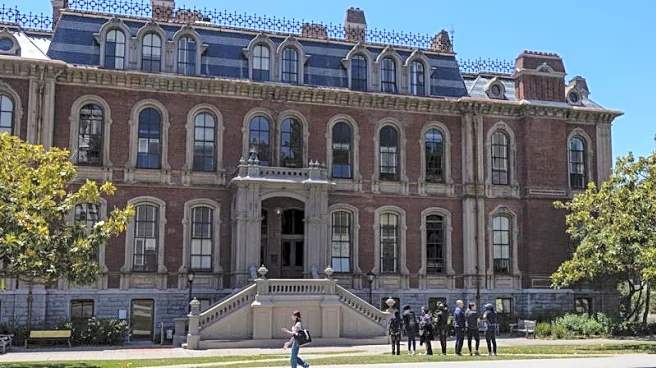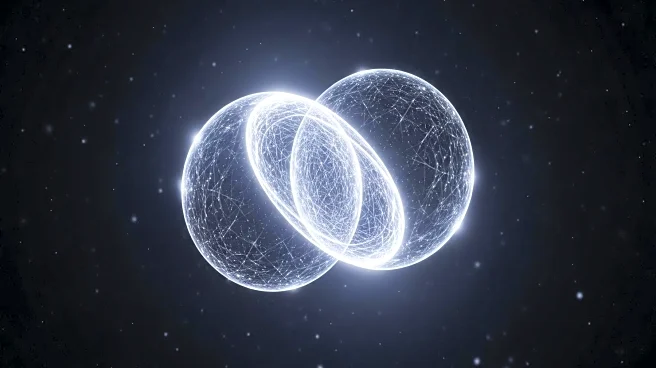What is the story about?
What's Happening?
Researchers at Columbia University have discovered nearly 20 previously hidden states of matter using a new laser technique. These states exist in a material called twisted molybdenum ditelluride (tMoTe₂) and do not require an external magnet to appear. The discovery, published in Nature, builds on decades of searching for exotic forms of quantum matter. The team, led by Xiaoyang Zhu, revealed states that include fractional fillings between 0 and -1, as well as many on the electron-doped side. This breakthrough is linked to the fractional quantum anomalous Hall effect, a phenomenon where voltage jumps in fixed steps, sometimes breaking into smaller ones, fractions of an electron's charge. The discovery could pave the way for new quantum computing technologies.
Why It's Important?
The discovery of these hidden states of matter is significant for the future of quantum computing. The fractional quantum anomalous Hall effect observed in twisted molybdenum ditelluride could lead to the development of topological quantum computers, which are more resistant to errors. These new states exist without magnets, which can disrupt superconducting materials used in quantum technology, making them easier to integrate into devices. The findings also establish pump-probe spectroscopy as a sensitive technique for detecting quantum states of matter, potentially inspiring further exploration and technological advancements.
What's Next?
The discovery opens up possibilities for further research into exotic quantum phases and their applications in technology. Researchers may explore the newly observed fractional fillings of the Chern bands, which could host non-Abelian states, a rare class of quantum matter crucial for stable topological quantum computing. The team hopes their results and technique will inspire others to explore these new states, potentially leading to advancements in quantum computing and other technologies.
Beyond the Headlines
The discovery adds to the 'quantum zoo,' expanding our understanding of how electrons can organize themselves. The idea of a quantum zoo captures the excitement in the field, as many predicted states existed only in mathematical models. With each new experimental technique, scientists uncover more states, expanding our understanding of quantum matter. The zoo's latest residents may soon be joined by even stranger creatures, as researchers continue to explore the complexities of quantum phases.
AI Generated Content
Do you find this article useful?















